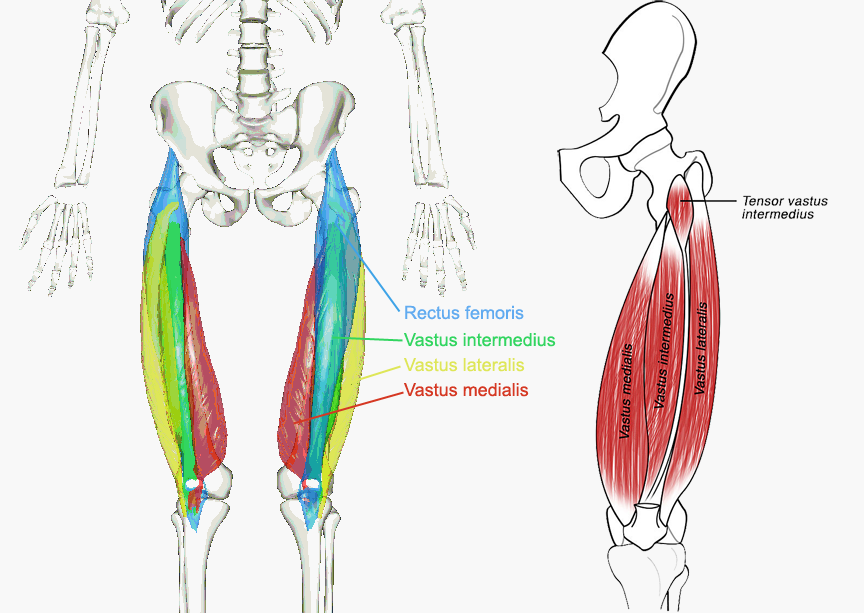Thigh Muscles: Anatomy, Functions, and Strengthening Exercises
Table of Content
Anatomy of Thigh Muscles
1. Anterior Compartment
2. Medial Compartment
3. Posterior Compartment
Functions of Thigh Muscles
Strengthening Exercises for Thigh Muscles
1. Squats
2. Lunges
3. Leg Press
4. Hamstring Curls
5. Leg Extensions
6. Adductor Machine
Conclusion
The thigh is a crucial part of the human body, playing a significant role in movement, balance, and overall mobility. It houses some of the largest and most powerful muscles essential for various daily activities and athletic endeavors. This article will explore the anatomy of thigh muscles, their functions, and effective exercises to strengthen them.
Anterior Compartment
Anatomy of Thigh Muscles
The thigh muscles are divided into three primary groups: the anterior, medial, and posterior compartments. Each group contains muscles that work together to facilitate movement and support the body.
1. Anterior Compartment
The anterior compartment primarily extends the knee and flexes the hip. It includes:
Quadriceps Femoris: This group of four muscles forms the anterior thigh's bulk. They are:
Rectus Femoris is the only quadriceps muscle that crosses both the hip and knee joints, aiding in hip flexion and extension.
Vastus Lateralis: Located on the outer thigh, it is crucial for knee extension.
Vastus Medialis: Found on the inner thigh, it also helps extend the knee and stabilize the patella.
Vastus Intermedius: Positioned between the vastus lateralis and vastus medialis, it extends the knee.
2. Medial Compartment
The medial compartment contains the adductor muscles responsible for bringing the thighs together (adduction). Key muscles in this group include:
Adductor Longus: A long, flat muscle on the inner thigh that assists in hip adduction.
Adductor Brevis: A shorter muscle located beneath the adductor longus, also aiding in hip adduction.
Adductor Magnus: The largest adductor muscle, which helps in both adduction and extension of the hip.
Gracilis: A thin, strap-like muscle that aids in hip adduction and knee flexion.
Pectineus: A small muscle that assists in hip flexion and adduction.
3. Posterior Compartment
The posterior compartment, called the hamstrings, is responsible for knee flexion and hip extension. It includes:
Biceps Femoris: This muscle has two heads (long and short) and is crucial for knee flexion and hip extension.
Semitendinosus: Located medially to the biceps femoris, it helps in knee flexion and hip extension.
Semimembranosus: Found beneath the semitendinosus, it aids knee flexion and hip extension.
Functions of Thigh Muscles
The thigh muscles play several vital roles in the body's movement and stability:
Knee Extension: Primarily performed by the quadriceps, this movement is essential for walking, running, and jumping.
Hip Flexion: Involves lifting the thigh towards the torso, facilitated by the rectus femoris and pectineus.
Knee Flexion: Performed by the hamstrings, this action is crucial for walking, running, and bending the knee.
Hip Extension: Involves moving the thigh backward, a function of the hamstrings, particularly during activities like standing up from a seated position or climbing stairs.
Thigh Adduction: Brings the thighs together, an action critical for maintaining balance and stability during movement.
Strengthening Exercises for Thigh Muscles
Strengthening the thigh muscles is essential for overall leg strength, stability, and injury prevention. Here are some effective exercises:
1. Squats
Target Muscles: Quadriceps, hamstrings, and glutes.
How to Perform: Stand with feet shoulder-width apart, lower your body as if sitting back into a chair, keeping your knees behind your toes. Return to standing position.
2. Lunges
Target Muscles: Quadriceps, hamstrings, glutes, and adductors.
How to Perform: Step forward with one leg, lowering your hips until both knees are bent at 90-degree angles. Push back to the starting position and repeat with the other leg.
3. Leg Press
Target Muscles: Quadriceps, hamstrings, and glutes.
How to Perform: Place your feet on the platform using a leg press machine. Extend your legs to push the platform away, then slowly return to the starting position.
4. Hamstring Curls
Target Muscles: Hamstrings.
How to Perform: Use a hamstring curl machine or resistance band, curling your legs towards your glutes from a prone or seated position.
5. Leg Extensions
Target Muscles: Quadriceps.
How to Perform: Use a leg extension machine. Extend your legs straight out in front of you and then slowly lower them back.
6. Adductor Machine
Target Muscles: Adductors.
How to Perform: Use an adductor machine. Bring your legs together against resistance and then slowly return to the starting position.
Conclusion
The thigh muscles are integral to many of our daily activities and movements. Understanding their anatomy and functions can help design effective workout routines to strengthen and maintain these muscles. Regular exercise, combined with proper technique and consistency, will lead to stronger, more resilient thigh muscles, improving overall mobility and reducing the risk of injury. Whether you're an athlete or just looking to improve your fitness, focusing on thigh muscle health is a crucial component of a balanced exercise program.




